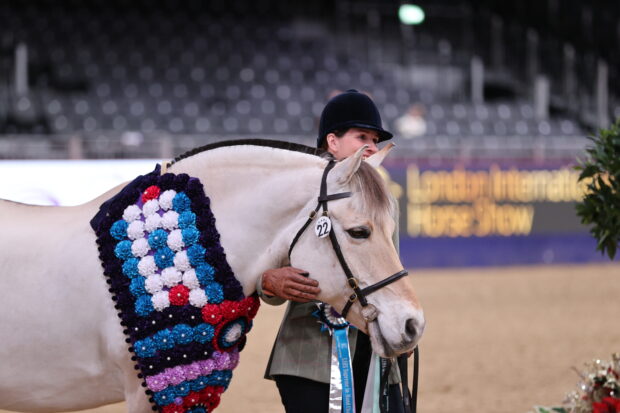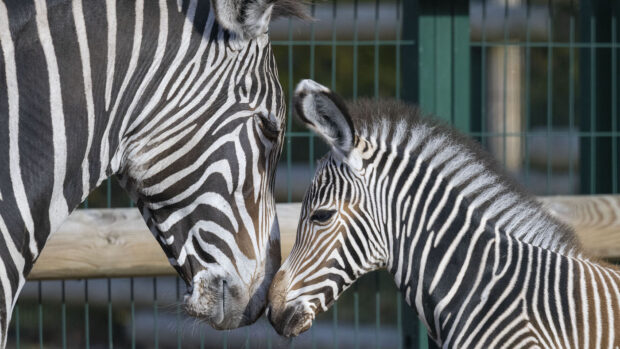The flashy Hackney horse is renowned for its spectacular high-stepping trot under harness. However, despite its impressive gaits, natural athleticism and straight action, the breed is classified at risk.
Although they are famous for their ability in harness, their agility, flair and activity make them an enjoyable riding horse, too, particularly when crossed with other sport horse breeds. However, probably due to the fact that they are endangered, pure-bred Hackneys are not a common sight under saddle.
In this article: History | Conformation | Movement | Royal approval
History
The Hackney was developed in England in the 18th century by crossing the Norfolk and Yorkshire Roadsters (trotting harness horses) with the thoroughbred. This produced a stylish carriage horse breed with a flashy trot for which the breed is renowned today. The Hackney Horse Society was formed in 1883 to promote Hackney breeding and is still in operation today, maintaining the studbook and holding two Hackney shows a year.
As the state of the roads improved in the 17th century, a faster type of carriage horse was in demand, leading to the introduction of thoroughbred bloodlines. These high-stepping horses became a status symbol, coupled with their ability to trot at high speed for long periods. They are still known to be characteristically tough, hardy and sound horses.
Quality thoroughbred stallions were influential on the breed, including their most significant foundation sire, Shales – also known as Original Shales and Old Shales. He was a grandson of the unbeaten Flying Childers.
Today the Hackney horse is classified as critical by the Rare Breeds Survival Trust. In 2022, the RBST declared there were just 12 stallions and 31 broodmares left in the UK. However, the Hackney has been exported to other countries, such as the US.

A Hackney mare and foal – but the breed is at risk due to low numbers of broodmares and stallions
Conformation and looks
- The general impression should be of poise and muscular elegance, with an alert and active outlook
- They can be a range of solid colours, and can have white markings on their face and legs. Bay, followed by black, are the most common, with chestnut fairly rare.
- The Hackney is a medium-sized horse, typically standing at a maximum of 16hh
- Head and neck: while standing, the Hackney should have its head and neck raised. The head should have a straight or slightly convex profile with eyes set wide apart. Ears should be well-formed and active, while the throat should be fine
- Body: neck well-set on reasonably high withers over powerful, obliquely sloping shoulders. Well-sprung girth of adequate depth, while the back is of a reasonable length. The upper line of the croup from the loins to tail should form a convex curve with a well-carried tail
- Legs: clean, flat bone with clearly defined tendons. Excessive fineness is undesirable. Forelegs attached well forward, beneath the point of the shoulder. Pasterns should be long and sloping to provide the light and springy step that is the breed’s hallmark
- Hooves: well-rounded with the front feet more sloping than the back. The hooves should be open at the heels and have concave soles
The Hackney is one of very few breeds to have both horse and pony sizes, but a pony is expected to show distinct pony characteristics, such as small, neat ears and a small, fine muzzle. It should be more compact than a Hackney horse, but the general conformation is similar. Likewise their movement will be brisker but with the same impressive action. They may include Welsh or Fell pony bloodlines, and are especially popular in the US.
Movement
The breed is renowned for its high stepping action in trot, with remarkable flexion. Hackneys should show a well-rounded front action, with the hocks flexed and following through under the body in a piston-like action. Although their trot is very dynamic, excessive speed is undesirable; instead it should look well-balanced and elegant. They should move straight, with no dishing or crossing of the forelegs.

Hackneys are best known for their prowess in harness
Hackneys are most famous for their spectacular brilliance in the driving arena, however, they can also be used as riding horses, for showing, jumping and dressage. They are a popular cross in various sport horse breeds, especially Gelderlanders and Holsteins.
Royal approval
HRH the Prince of Wales is the current patron of the Hackney Horse Society. Over the years, the society has had a number of royal presidents, including The Queen, the Duke of Edinburgh, The Princess Royal, Prince Michael of Kent, The Duchess of York and the Prince of Wales.
You may also enjoy reading…

The ‘golden horse’: the stamina, spirit and shimmering coat of the exotic Akhal-Teke

The Arabian horse: the history, hallmarks and heritage of this graceful breed

The Clydesdale horse: the pride of Scotland with both substance and style

Subscribe to Horse & Hound magazine today – and enjoy unlimited website access all year round
Horse & Hound magazine, out every Thursday, is packed with all the latest news and reports, as well as interviews, specials, nostalgia, vet and training advice. Find how you can enjoy the magazine delivered to your door every week, plus options to upgrade your subscription to access our online service that brings you breaking news and reports as well as other benefits.





